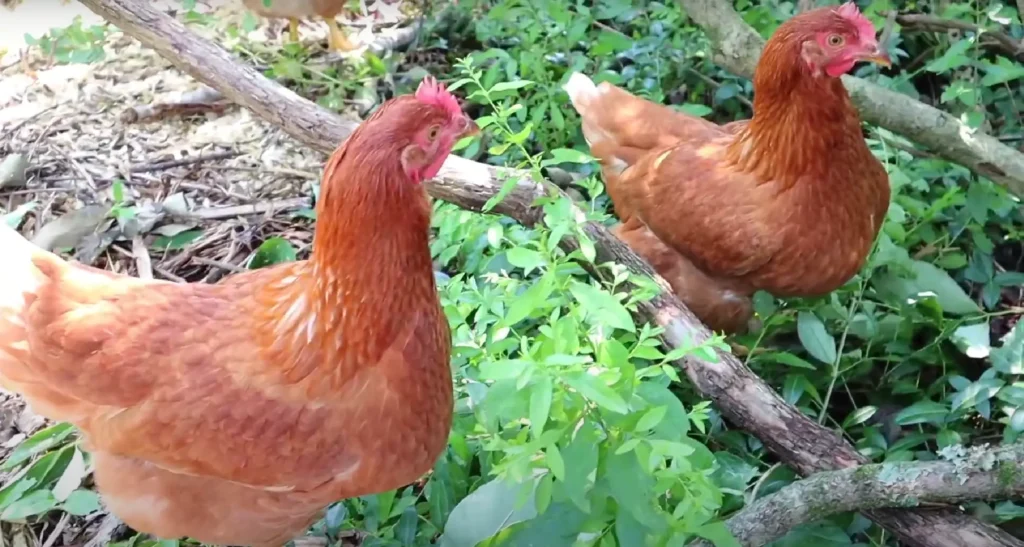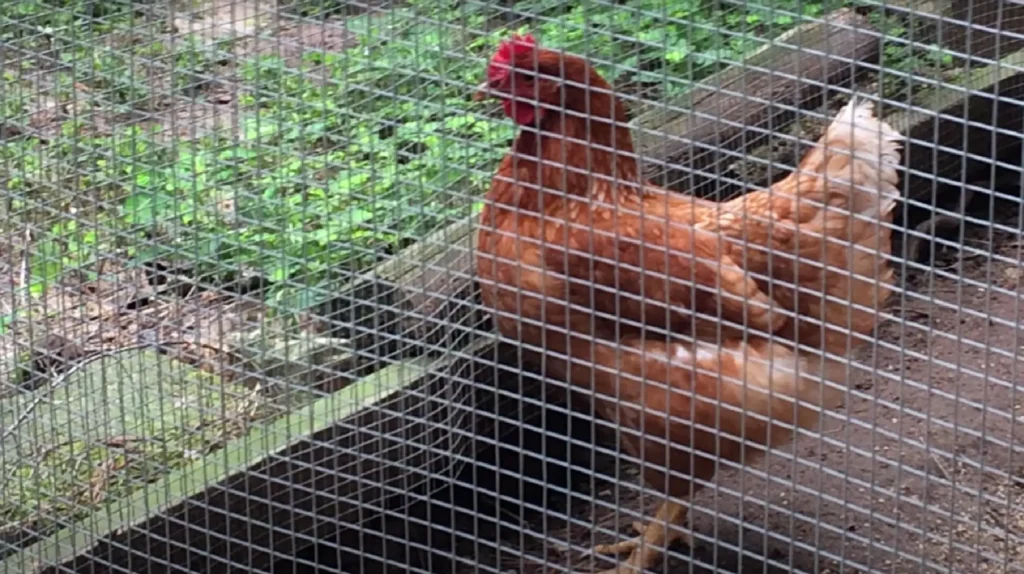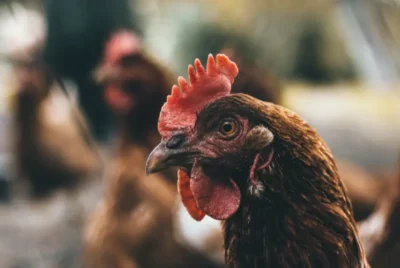Red Star Chickens: The Ultimate Guide to Breeding and Care
Red Star Chickens, a popular breed among poultry enthusiasts, are admired for their vibrant plumage and outstanding egg-laying abilities. However, successful breeding and care of these chickens require more than just admiration; it demands a deep understanding of their specific needs.
This guide aims to provide comprehensive insights into the world of Red Stars, covering everything from their dietary requirements and sheltering needs to health management and breeding techniques.
Breed Origin Red Star Chicken
The Red Star Chicken also called Red Sex Linked, Golden Comet, and ISA brown, is a breed with a mixed heritage, primarily developed in the United States in the late 19th century. Its creation involved crossing several established chicken breeds, most notably the New Hampshire and Rhode Island breeds, specifically the Rhode Island Red rooster and the Rhode Island White hen.
The aim was to produce a brown egg layer chicken that excelled in both egg and meat production, catering to the needs of farmers who required efficient and versatile poultry. This chicken breed also has genetic roots tracing back to Indian chicken breeds, which contributes to its unique characteristics.
Physical Appearance of Red Star Chickens

Body Size
Red Star Chickens are medium to large, typically weighing between 8 to 11 pounds. They have a robust and sturdy build, characterized by longer legs and a larger head compared to some other chicken breeds. This substantial body size not only contributes to their physical resilience but also their value in terms of meat production.
Feather Color
The most striking feature of Red Star Chickens is their feather color. They usually sport deep mahogany feathers, which can vary in shade from a rich reddish hue to lighter tones of orange or red-orange. In some cases, this breed may display variations in their plumage, including white or black feathers, but these are less common.
Combs and Wattles
Red Star Chickens are easily recognizable by their red combs and wattles, which are consistent features across the breed. The combs are typical of the rose variety, which lies closer to the head, offering a distinct look different from the more common single comb.
Moreover, the wattles and comb are bright red, providing a vivid contrast to their mahogany feathers.
Red Star Chicks
Male and female chicks Red Star Chicks are distinguishable at birth. Male chicks typically hatch out with a predominantly white color. As they begin to feather, some may retain this pure white appearance, while others develop additional red or black feathering. These male chicks are characterized by their light yellow down with black markings and notably lack any red down.
Female chicks, in contrast, hatch out in shades of buff or red, which varies based on the parent breeds’ characteristics. They have red down that is very similar to Production Reds. This distinct difference in down color between the sexes is a critical feature used by hatcheries to accurately sex chicks on the day of hatch.
Personality of the Red Star Chicken

Temperament
Red Star Chickens has a sociable and friendly demeanor. They enjoy the company of both their human caretakers and fellow chickens. These chickens are typically very social and just want to stay close to the flock. But they are also adaptable to free-ranging when trained.
Activity Level and Curiosity
These chickens are active and curious, often seen exploring their surroundings. They exhibit a gentle nature despite their activity levels and are unlikely to show aggression towards other chickens or humans. So they are a safe choice in mixed flocks and around families with children.
Noise Levels
Red Star Chickens might not be the best choice for noise-sensitive environments. They can be quite vocal, and while there are quieter individuals, they generally enjoy being chatty and can sometimes be disruptive.
Hardiness
Red Stars are remarkably hardy and can adapt well to different climates. However, like any chicken breed with a prominent comb, they need protection from frostbite in extremely cold conditions. Moreover, they continue to lay eggs consistently through winter if they are well-protected and provided with comfortable nesting conditions.
Lifespan
In terms of longevity, Red Stars have a lifespan of approximately 10-12 years. They are known for their hardiness and disease resistance, which makes them a reliable choice for both commercial and backyard poultry keepers.
Also, they are adaptable and can maintain their health and feather quality even in varied environments, although they may experience more drastic molting under certain conditions, like prolonged confinement.
Red Star Chickens Egg Laying Performance

Red Star Chickens have outstanding egg-laying performance, making them a top choice for both backyard poultry enthusiasts and small-scale commercial operations.
These Red Star hens begin laying at an early age, typically around 18 to 22 weeks and are known for their consistency and prolificacy in egg production. On average, a Red Star hen can lay between 280 to 360 large, light brown eggs annually, with many maintaining a steady output of close to 300 large brown eggs per year during their prime years.
This high yield is particularly impressive considering their egg-laying ability remains relatively unaffected by seasonal changes, including the colder months.
While the peak production period for Red Stars is within the first few years, their ability to lay eggs consistently and in large quantities during this time makes them an invaluable asset for those seeking a reliable source of fresh eggs.
Meat Production of Red Star Chickens
As a dual-purpose breed, they provide a good balance between egg and meat production, making them a practical choice for backyard flocks and small-scale poultry farmers. These chickens grow to a medium to large size, typically weighing between 8 to 11 pounds, which results in a decent amount of meat that is well-suited for family consumption.
The meat of the Red Star Chicken is known for its rich flavor, which is a direct outcome of their robust size and healthy diet. While they may not be as large as some meat-specific breeds and won’t replace bigger poultry like turkeys for large meals, they are certainly large enough for regular family dinners.
Common Health Issues of Red Star Chickens

Red Star Chickens are generally known for their hardiness and good health, but like all breeds, they are susceptible to certain health issues. Understanding these common health problems can help in maintaining a healthy flock:
- Frostbite: In colder climates, Red Star Chickens, like other breeds, can suffer from frostbite, particularly on their combs and wattles. Providing a dry, draft-free coop and applying petroleum jelly to combs and wattles in extreme cold can help prevent frostbite.
- Egg Binding: This condition occurs when a hen is unable to lay her egg, which can be life-threatening. It’s more common in prolific layers like the Red Star. Ensuring a diet rich in calcium and monitoring for symptoms like lethargy or a swollen abdomen can help in early detection and treatment.
- Fatty Liver Hemorrhage Syndrome: This is a metabolic disorder often linked to high egg production and obesity. It can be fatal and is often seen in prolific laying breeds like the Red Star.
Care Requirements for Red Star Chickens

Chicken Coop
- Coop Requirements: Red Star Chickens need a coop for safe roosting and nesting. The coop should be constructed with durable materials like hardwood, metal, and hardware cloth to protect against predators. Each chicken requires at least 4 square feet of space in the coop.
- Roosting and Nesting Space: They should have about 1 foot of roosting space per bird. A good rule for nesting boxes is to have one box for every 4 chickens.
- Space for Roaming: While not overly adventurous, Red Stars are happiest with space to roam and engage in natural behaviors. They are better flyers than some breeds, so a covered chicken run might be necessary to prevent escape. If confined to a run, I recommend each chicken should have at least 10 square feet of space, and the environment should be enriched with puzzles, chicken toys, and fresh foods.
- Free-Roaming Environment: Ideally, Red Stars should have the opportunity to roam freely in a safe, fenced environment. This setup allows them to forage and explore, reducing the chance of conflicts due to overcrowding. For those with lower fences, I suggest using wing clipping to prevent them from flying over.
Read also: How to Build a Safe Chicken Run That’s 100% Safe
Dietary
- Stage-Appropriate Commercial Feed: Red Stars, known for their hearty appetite, require a high-quality commercial feed that is appropriate for their life stage. I suggest giving your chicks a high-protein starter feed to ensure a healthy start. As they grow into pullets and cockerels, you can give them a grower formula. Also, mature hens need a layer formula enriched with higher calcium to support egg production.
- Treats and Scraps: These chickens enjoy a variety of treats and scraps, which can make up about 10% of their diet. Favorites include apples, bananas, various berries, bread, broccoli, cabbage, corn, kiwi, mealworms, rice, and tomatoes.
- Grit for Digestion: When fed items other than commercial feed, Red Stars require grit to aid in breaking down their food. While they may pick up some naturally during foraging, I still advise providing a direct source of grit for their digestive health.
Red Star Chicken Breed Summary
Raising Red Star Chickens can be a highly rewarding experience. With proper care, these prolific brown egg layers can be a fantastic addition to your backyard, providing fresh eggs and meat, along with the joy of interacting with these sociable creatures.
You can follow our guidelines to ensure your Red Stars thrive, contributing to a sustainable and enjoyable poultry-keeping venture.




